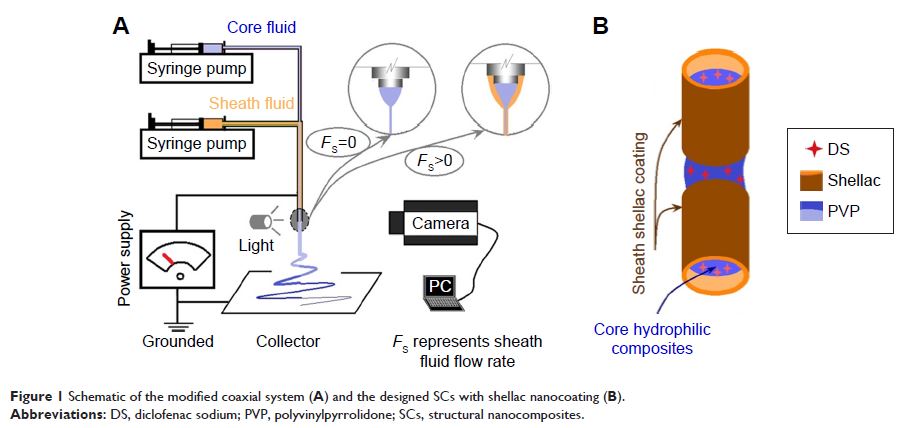108985
论文已发表
注册即可获取德孚的最新动态
IF 收录期刊
- 3.4 Breast Cancer (Dove Med Press)
- 3.2 Clin Epidemiol
- 2.6 Cancer Manag Res
- 2.9 Infect Drug Resist
- 3.7 Clin Interv Aging
- 5.1 Drug Des Dev Ther
- 3.1 Int J Chronic Obstr
- 6.6 Int J Nanomed
- 2.6 Int J Women's Health
- 2.9 Neuropsych Dis Treat
- 2.8 OncoTargets Ther
- 2.0 Patient Prefer Adher
- 2.2 Ther Clin Risk Manag
- 2.5 J Pain Res
- 3.0 Diabet Metab Synd Ob
- 3.2 Psychol Res Behav Ma
- 3.4 Nat Sci Sleep
- 1.8 Pharmgenomics Pers Med
- 2.0 Risk Manag Healthc Policy
- 4.1 J Inflamm Res
- 2.0 Int J Gen Med
- 3.4 J Hepatocell Carcinoma
- 3.0 J Asthma Allergy
- 2.2 Clin Cosmet Investig Dermatol
- 2.4 J Multidiscip Healthc

通过亲水性非晶复合材料上的电纺虫胶纳米涂层实现结肠特异性脉冲药物释放
Authors Yang Y, Liu ZP, Yu DG, Wang K, Liu P, Chen X
Received 23 October 2017
Accepted for publication 9 February 2018
Published 18 April 2018 Volume 2018:13 Pages 2395—2404
DOI https://doi.org/10.2147/IJN.S154849
Checked for plagiarism Yes
Review by Single-blind
Peer reviewers approved by Dr Govarthanan Muthusamy
Peer reviewer comments 4
Editor who approved publication: Dr Linlin Sun
Background: Colon-specific pulsatile drug release, as a combined drug
controlled-release model, is a useful drug delivery manner for a series of
diseases. New nanomedicines and related preparation methods are highly desired.
Methods: With diclofenac sodium (DS) as a model drug, a new type of
structural nanocomposite (SC), in which composite polyvinylpyrrolidone (PVP)–DS
core was coated by shellac, was fabricated via modified coaxial
electrospinning. For comparison, traditional PVP–DS monolithic hydrophilic
nanocomposites (HCs) were generated using a traditional blending process.
Scanning electron microscopy (SEM), transmission electron microscopy (TEM),
X-ray diffraction (XRD), attenuated total reflectance-Fourier transform
infrared (ATR-FTIR), water contact angle (WCA), and in vitro dissolution and ex
vivo permeation tests were conducted to characterize the composites.
Results: SEM images demonstrated that both composites were linear
nanofibers with smooth surface morphology and cross sections. TEM disclosed
that the SCs had a thin shellac sheath layer of approximately 12 nm. XRD and
ATR-FTIR results demonstrated that the crystalline DS was converted into
amorphous composites with PVP because of favorable secondary interactions. WCA
and in vitro dissolution tests demonstrated that the sheath shellac layers in
SC could resist acid conditions and provide typical colon-specific pulsatile
release, rather than a pulsatile release of HC under acid conditions. Ex vivo
permeation results demonstrated that the SCs were able to furnish a tenfold
drug permeation rate than the DS particles on the colon membrane.
Conclusion: A new SC with a shellac coating on hydrophilic amorphous
nanocomposites could furnish a colon-specific pulsatile drug release profile.
The modified coaxial process can be exploited as a useful tool to create
nanocoatings.
Keywords: modified coaxial electrospinning, nanocoating, colon-targeted,
pulsatile release, structural composites
